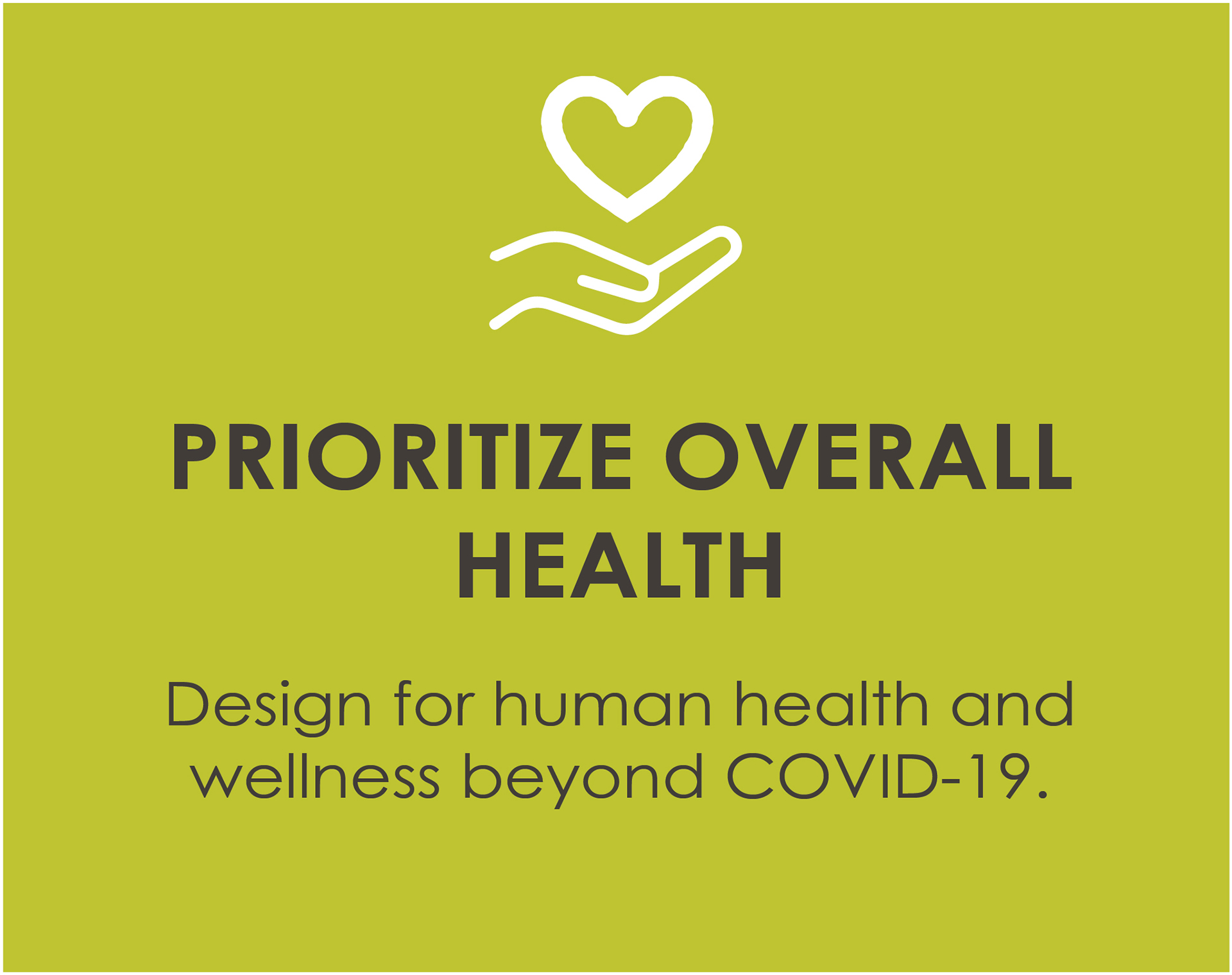
Design for human health and wellness beyond COVID-19.
- Provide additional orientation and training to staff in an effort to create a sense of preparedness, calm, security, and confidence.
- Encourage the use of Personal Protective Equipment (PPE) during pandemic times.
- Provide health and wellness education and training and collect surveys on occupant wellness, comfort, and satisfaction.
- Maximize daylight and intentionally design lighting to create a healthier and more productive environment.
- Provide healthy food and beverage options to occupants, including those with dietary restrictions and food allergies.
- Monitor indoor air quality and reduce exposure to pollutants.
- Consider providing operable windows to be opened when outdoor air quality is optimal.
- Provide access to drinking water that is free of contaminants and unpleasant taste or odor.
- Encourage physical activity in the design of the circulation system, selection of active furniture, and offering opportunities for commuters to walk or bike.
- Consider offering access to physical activity spaces and equipment, whether on the premises, or by partnering with a local gym/fitness studio.
- Design strategies to optimize acoustical comfort and privacy.
- Avoid the use of materials or substances that are harmful to humans or the environment.
- Support psychological health by providing outdoor views and access to nature and outdoor space.
- Promote mental health awareness by offering training, education, programming, and access to support services and care.
- Provide opportunities for social engagement and encourage family and community involvement.

